Story
Colorado’s Reel History: Rocky Ford Enterprise
Our Colorado’s Reel History blog series showcases some of the many newspapers in our collection. Check out some clippings from the Rocky Ford Enterprise below, then read on for a short history of the paper.
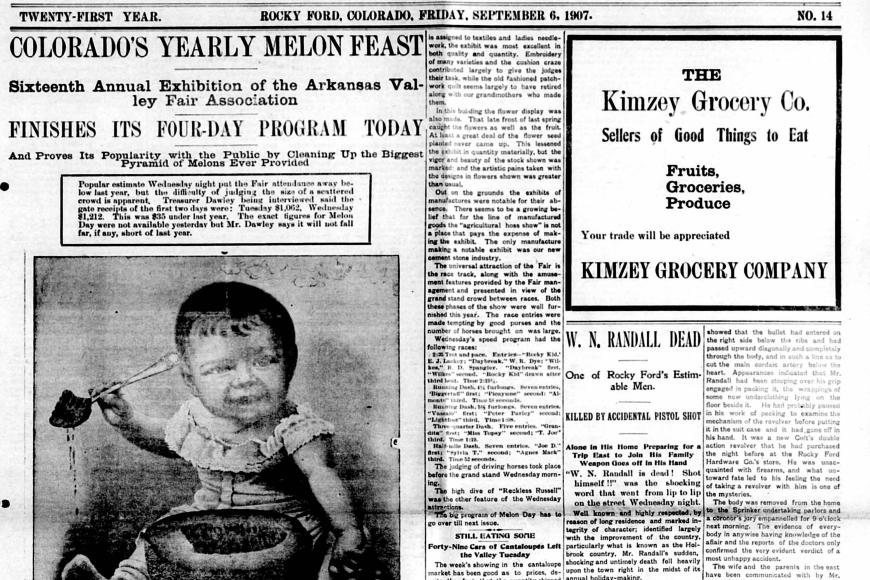
Rocky Ford Enterprise, September 6, 1907
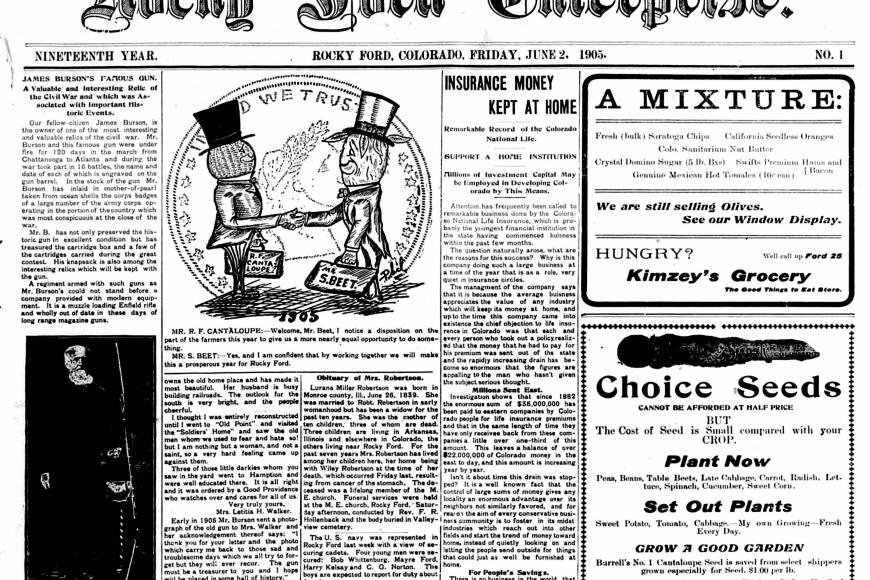
Rocky Ford Enterprise, June 2, 1905
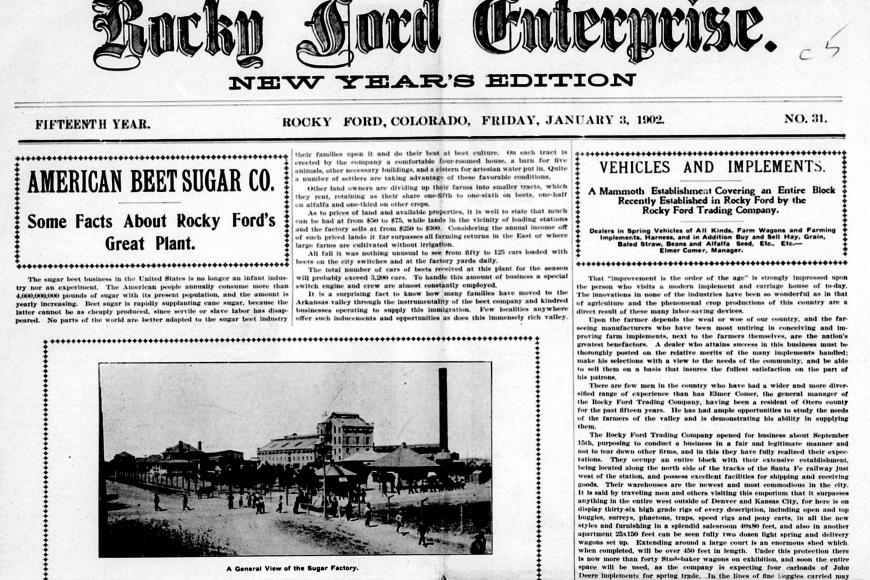
Rocky Ford Enterprise, January 3, 1902
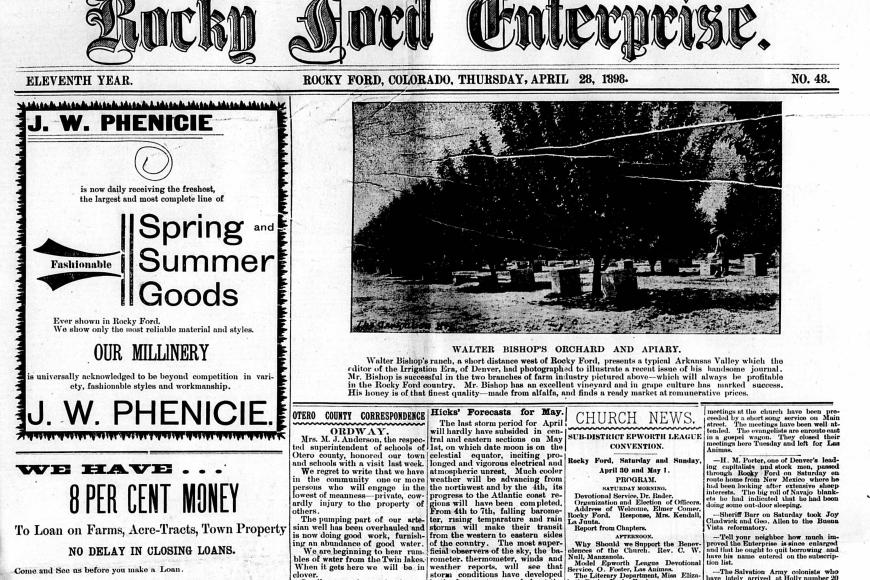
Rocky Ford Enterprise, April 28, 1898
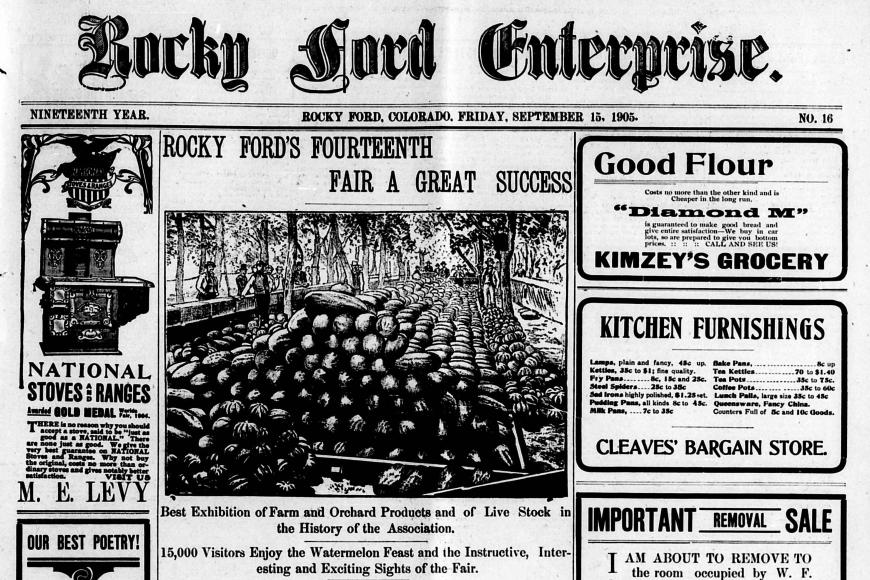
Rocky Ford Enterprise, September 15, 1905
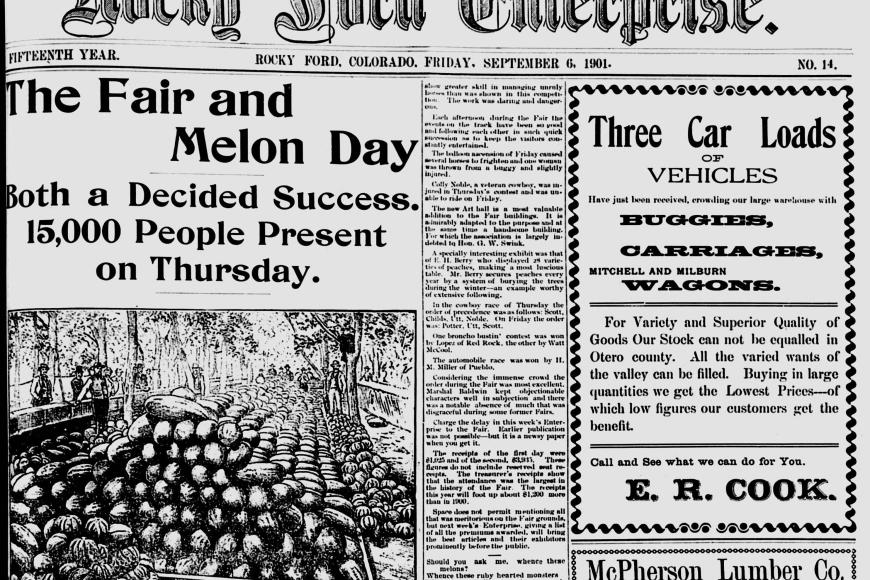
Rocky Ford Enterprise, September 6, 1901
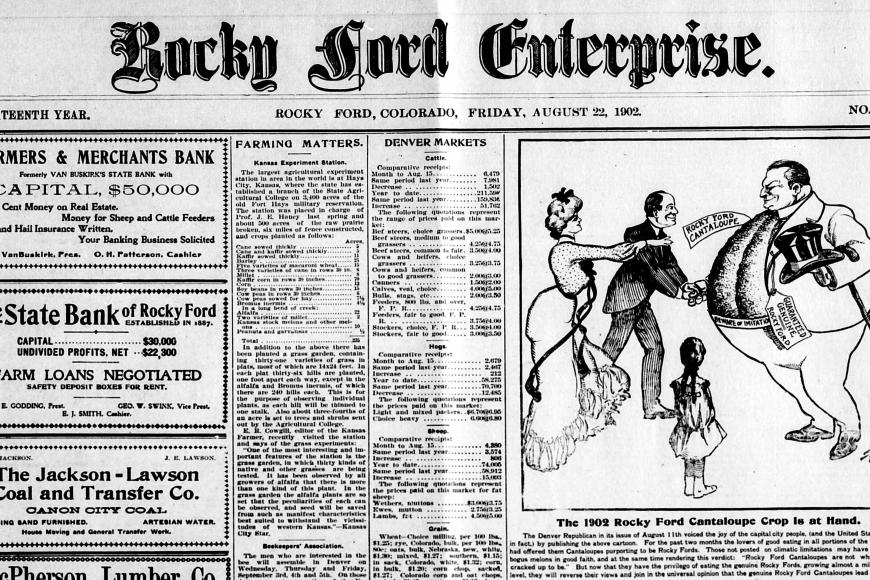
Rocky Ford Enterprise, August 22, 1902
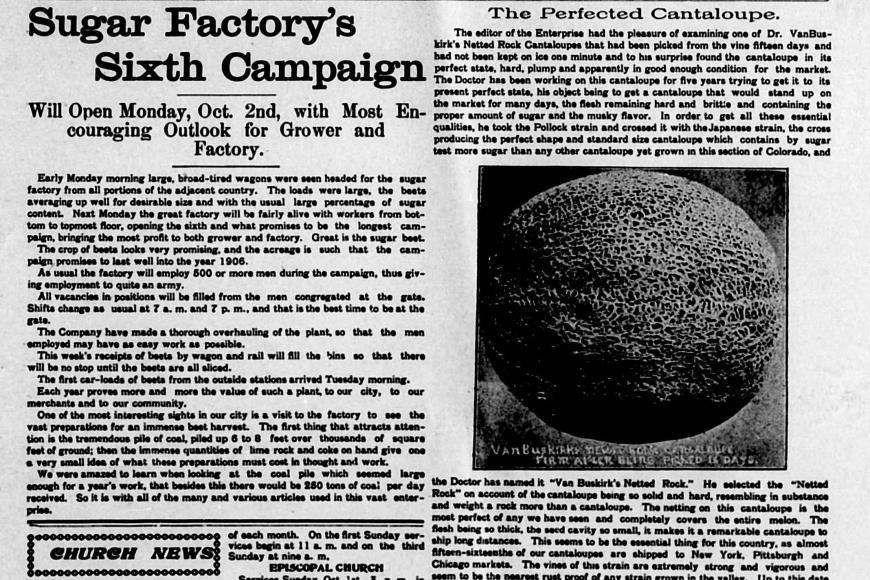
Rocky Ford Enterprise, September 29, 1905
In 1877 George W. Swink and A. Russell platted the area of Rocky Ford, Colorado, in the Arkansas River Valley on the state’s southeastern plains. By 1887 the town of Rocky Ford was organized and four hundred acres were platted and sold almost immediately to incoming settlers. Owing to the fertile soil and irrigation of the area, Rocky Ford thrived as an agricultural center, producing high yields of sugar beets and watermelons and becoming known as the “Watermelon Metropolis.”
Rocky Ford led the state in the advancement of horticulture, particularly fruit grafting, producing forty varieties of apples, fourteen of plums, thirty-three of grapes, twelve of pears, and eight of cherries. Rocky Ford also boasted the Arkansas Valley Agriculture Experiment Station, established under Colorado state law in 1889; the Rocky Ford Milling and Elevator Company; the Birds Brothers’ canning plant, often referred to as the Rocky Ford Canning Co., which produced 10,000 cans daily of local produce and employed many of Rocky Ford’s townsfolk; and the first factory of the American Beet Sugar Refining Company.
Harry V. Alexander founded the township’s paper, the Rocky Ford Enterprise, in 1887. The Colorado Daily Chieftain described Alexander as a “pleasant gentleman, who if appearances are a true index, will be able to reach the grangers through the hay seed and corn cobs, and convince them, not only that towns are much benefited by the intelligent and industrious husbandman . . . but also that the towns do confer upon the farmers many advantages in return.”
In 1890 David W. Barkley purchased the paper and almost immediately sold it to Richard C. Herrick, formerly of the Chieftain. Under Herrick the Enterprise changed in appearance—new masthead, new type—and allegedly the increase in circulation necessitated the purchase of a steam-powered press to keep up with demand. Herrick sold the paper to the Enterprise Publishing Company in 1891 and Charles S. Linn came on as the new editor.
By 1893 David W. Barkley repurchased the Enterprise. Under Barkley the paper was enlarged and fitted out with a complete steam plant. Described as an agricultural rather than a political paper, although it was Republican-affiliated, the Enterprise had a mission to “make a weekly history of the doings, growth, and progress of this, the best and most prosperous section of the rich Arkansas Valley.” Described by another paper, the Plaindealer (Ouray, CO) on August 26, 1904, as a “little fellow, but full of juice, like the melons out there,” the Enterprise newspaper covered agriculture, the canning factory, flour mill, and sugar refinery. It published special editions written and edited by the women of Rocky Ford and featured local events such as “Watermelon Days.” In fact, the paper once printed a lithographic picture of the town’s founder and the benefactor of Watermelon Days, by-then Senator George W. Swink, standing beside an upright watermelon five feet long.
Barkley continued as editor and publisher of the Enterprise until 1907 when, because of his failing health, he sold the paper to Will R. Monkman. Monkman published the Enterprise with his wife and daughter for the next thirty-eight years. In 1944 James B. Woody bought the Enterprise, which merged with the Rocky Ford Tribune [LCCN: sn90051274] in 1947 and was ultimately sold to Miles F. Porter of the Rocky Ford Gazette, who merged out the Enterprise in 1950.
These newspapers have been digitized thanks to an NEH National Digital Newspaper Program grant. You can also read issues of the newspaper online at Library of Congress’ Chronicling America and the Colorado Historic Newspapers Collection.
